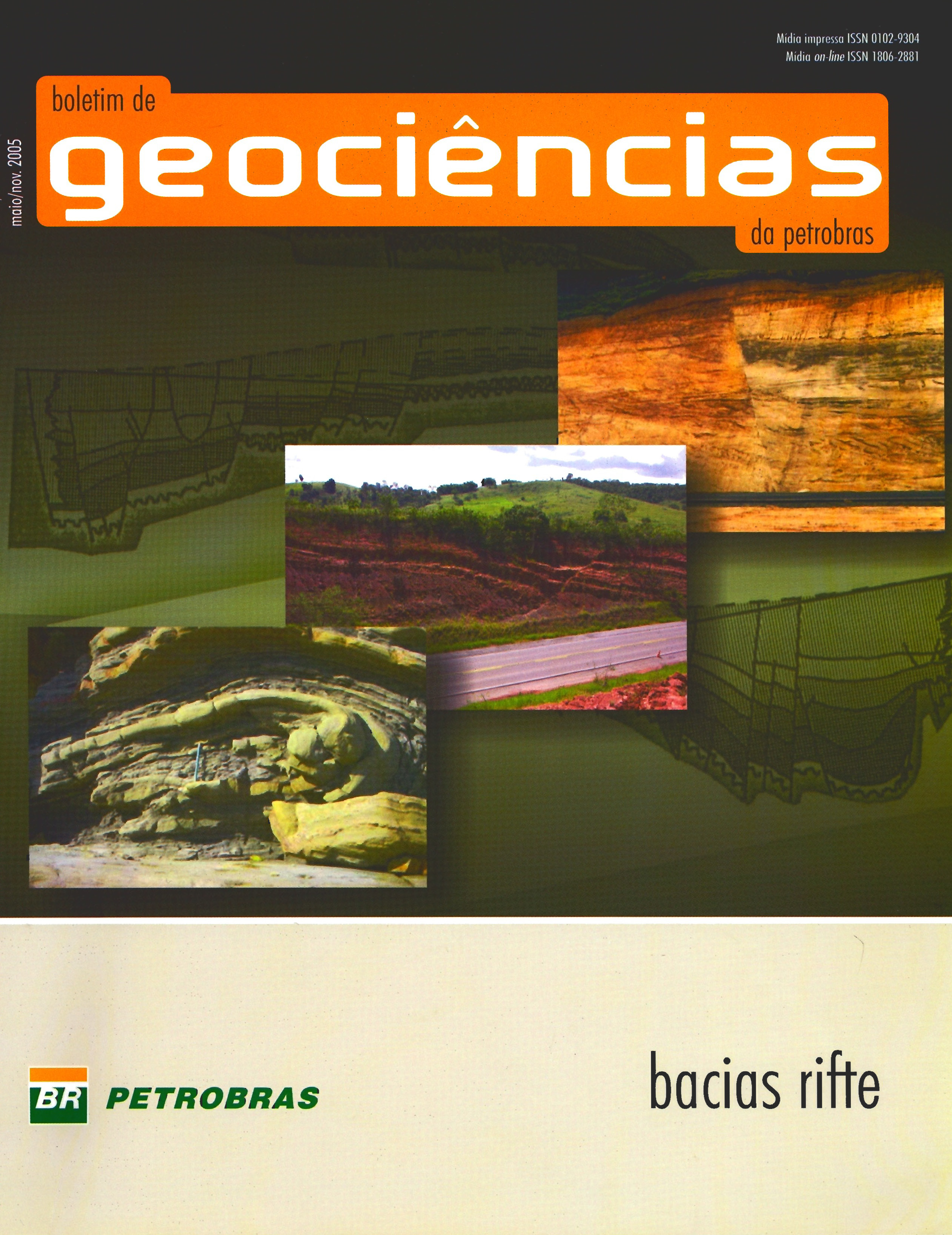Stratigraphic analysis of rift basins: application of genetic concepts in Camamu-Almada and Jequitinhonha basins
Keywords:
rift, Camamu-Almada, Jequitinhonha, Sequence Stratigraphy, stratigraphic analysisAbstract
The stratigraphic succession of Camamu-Almada and Jequitinhonha rift basins have been analyzed based on a data set formed by 73 wells and 832 2D seismic lines. Based upon revised concepts of sequence stratigraphy as a tool for genetic analysis, five second-order sequences were recognized: a basal Paleozoic sequence (SEQ-Plz), formed by sandstones and mudstones of the Afligidos Formation; sequence A (SEQ-A) encompassing Aliança, Sergi and Itaípe formations; the sin-rift sequence SEQ-B (encompassing four third-order sequences), Sequence C (SEQ-C) formed by the Algodões (in Camamu-Almada basin) and the São Mateus and Regência formations (in Jequitinhonha basin) and sequence D (SEQ-D) represented by the Urucutuca, Caravelas, Rio Doce and Barreiras formations, forming the passive margin succession of both basins. The regional unconformities that delimit the rift phase of Camamu-Almada and Jequitinhonha basins are sequence boundaries LS-B and LS-C; which envelope a rock succession formed in a time span of 30 million of years. Using the concept of tectonic systems tracts to understand the evolution of the Camamu-Almada and Jequitinhonha rift basins, the following interpretation can be provided: sequences SEQ-Plz and SEQ-A are pre-rift successions; SEQ-B1 forms the rift initiation systems tract, SEQ-b2 and SEQ-B3 represent the rift climax systems tract, SEQ-B4 forms the rift fill systems tract, while SEQ-C and SEQ-D form the late post-rift systems tract. The process-oriented focus of the stratigraphic analysis is an important step forward in order to understand the geologic evolution of Camamu-Almada and Jequitinhonha basins because it helps to characterize petroleum systems and provides better predictions of source rock and reservoirs within the studied section.
Downloads
Published
Issue
Section
License
This license enables reusers to distribute, remix, adapt, and build upon the material in any medium or format, so long as attribution is given to the creator. The license allows for commercial use.


